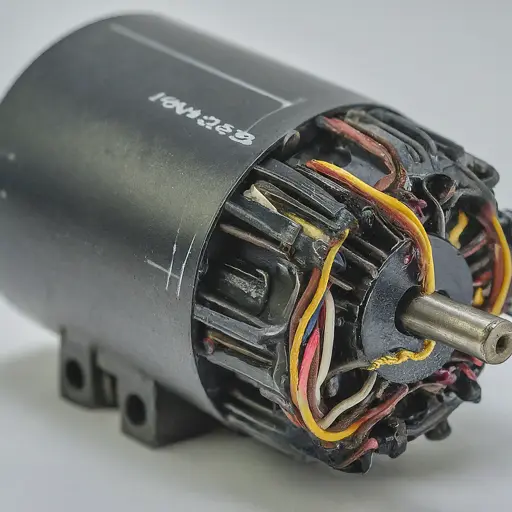The VEX 393 motor is a staple in VEX robotics projects. However, there are times when it may not show up in your robot’s configuration for various reasons. This guide aims to help you systematically troubleshoot and resolve this issue to get your motor up and running in no time.

Contents
- 1 Understanding the Basics
- 2 Step-by-Step Troubleshooting
- 3 FAQs
- 3.1 The motor worked before; why isn’t it showing up now?
- 3.2 I am certain my code is correct. What else can I try?
- 3.3 Do motor cables require a specific orientation?
- 3.4 My other motors work, but not this specific one. Could it be faulty?
- 3.5 Where can I find information about replacing a faulty motor?
- 3.6 Conclusion
Understanding the Basics
Before delving into troubleshooting, let’s clarify a few concepts:
- Programming Environment: You’ll likely be using a programming environment like VEXcode, RobotC, or PROS to interact with your VEX 393 motor.
- Motor Configuration: Within your chosen programming environment, you’ll define and configure motors on specific ports, providing instructions for your robot’s brain to communicate with them.
Step-by-Step Troubleshooting
Follow these steps in order until your VEX 393 motor shows up:
1. Physical Connections:
- Secure Ports: Double-check that the motor wires are securely inserted into the correct ports on your robot’s brain. Loose connections are a common issue.
- Check Wire Integrity: Visually inspect the motor wires for breaks, exposed wires, or other signs of damage that could disrupt signals. Replace if necessary.
2. VEX Firmware and Software:
- Update Firmware: Ensure that your robot’s brain has the latest firmware. Outdated firmware may create compatibility issues. Update this through the official VEX utilities.
- Programming Environment Updates: Verify that you’re using the latest version of VEXcode, RobotC, or PROS. Older software versions may have bugs or limited motor support.
3. Motor Configuration in Code
- Port Match: Make absolutely sure the port in your code matches the physical port the motor is plugged into. Incorrect port configuration will prevent recognition.
- Check Code Syntax: Carefully review your code’s syntax, especially with configuring motors. Missing semicolons, typos, or incorrect commands can lead to issues.
- Verify Motor Type: If the wrong motor type is selected within your code, communication won’t happen. Be certain you’ve selected the VEX 393 motor.
4. Power Issues
- Battery Charge: A low battery might not provide enough power for all components, including your motor. Replace or recharge batteries for optimal performance.
- Cortex Power Cycle: Try power-cycling your VEX Cortex (or whichever microcontroller you’re using) by turning it off, waiting a few seconds, and turning it back on.
5. Advanced Troubleshooting
Internal Motor Failure: If all else fails, there’s a possibility your motor itself has an internal fault. Test with a different, known-working 393 motors on the same port to eliminate this possibility.
Additional Troubleshooting and Tips
- Motor Configuration Conflicts: If you have numerous motors in your project, examine your code to rule out configuration conflicts (e.g., using the same port multiple times accidentally).
- Debugging Tools: Some programming environments offer debugging features. Learn how to use them to track variable values or motor status signals to see where things might be breaking down.
- Wireless Debugging (if applicable): VEXcode and certain other programs may offer wireless debugging capabilities. This can be useful for examining robot behavior in real-time to spot motor communication issues.

Specific Code Examples
We could provide code examples within the article demonstrating basic 393 motor configuration in popular languages:
- VEXcode Blocks: Include sample code blocks showing how to configure a 393 motor.
- VEXcode Text (C++ or Python): Example text-based code snippets.
- RobotC: A segment dedicated to RobotC users, as it’s still very common in VEX.
Resources and Community
- Link to the VEX Forum: A direct link to the VEX Forum within the article makes it easier for users to ask for help.
- Glossary of Terms: For beginners, define terms like ‘firmware’, ‘port’, and ‘polarization’ to reduce confusion.
FAQs
The motor worked before; why isn’t it showing up now?
Double-check for changes in port connections, program modifications, or updates that might have caused the issue.
I am certain my code is correct. What else can I try?
Reach out to online communities like the VEX Forum (https://www.vexforum.com/) for detailed help and potential workarounds.
Do motor cables require a specific orientation?
Yes, motor cables are usually polarized. If plugged in backward, the motor won’t function. Inspect for markings like “+/-” or color-coding to help with the correct orientation.
My other motors work, but not this specific one. Could it be faulty?
Yes. Swap it with a known-functioning 393 to isolate whether the motor itself is the issue.
Where can I find information about replacing a faulty motor?
Visit the VEX Robotics website for information on replacement parts and procedures.
Conclusion
By methodically addressing each step of this guide, chances are you’ll diagnose and solve the reason your VEX 393 motor isn’t showing up.
